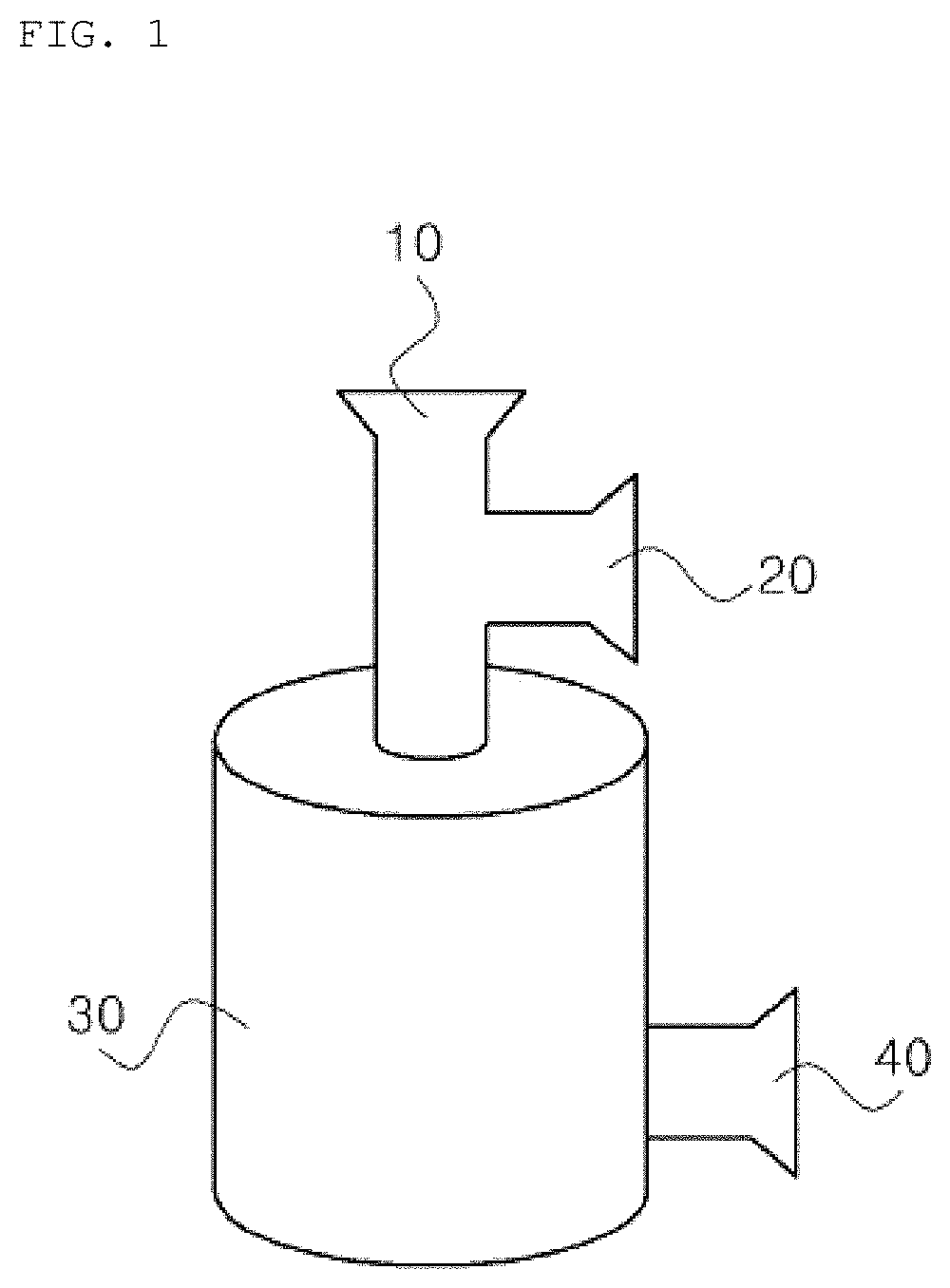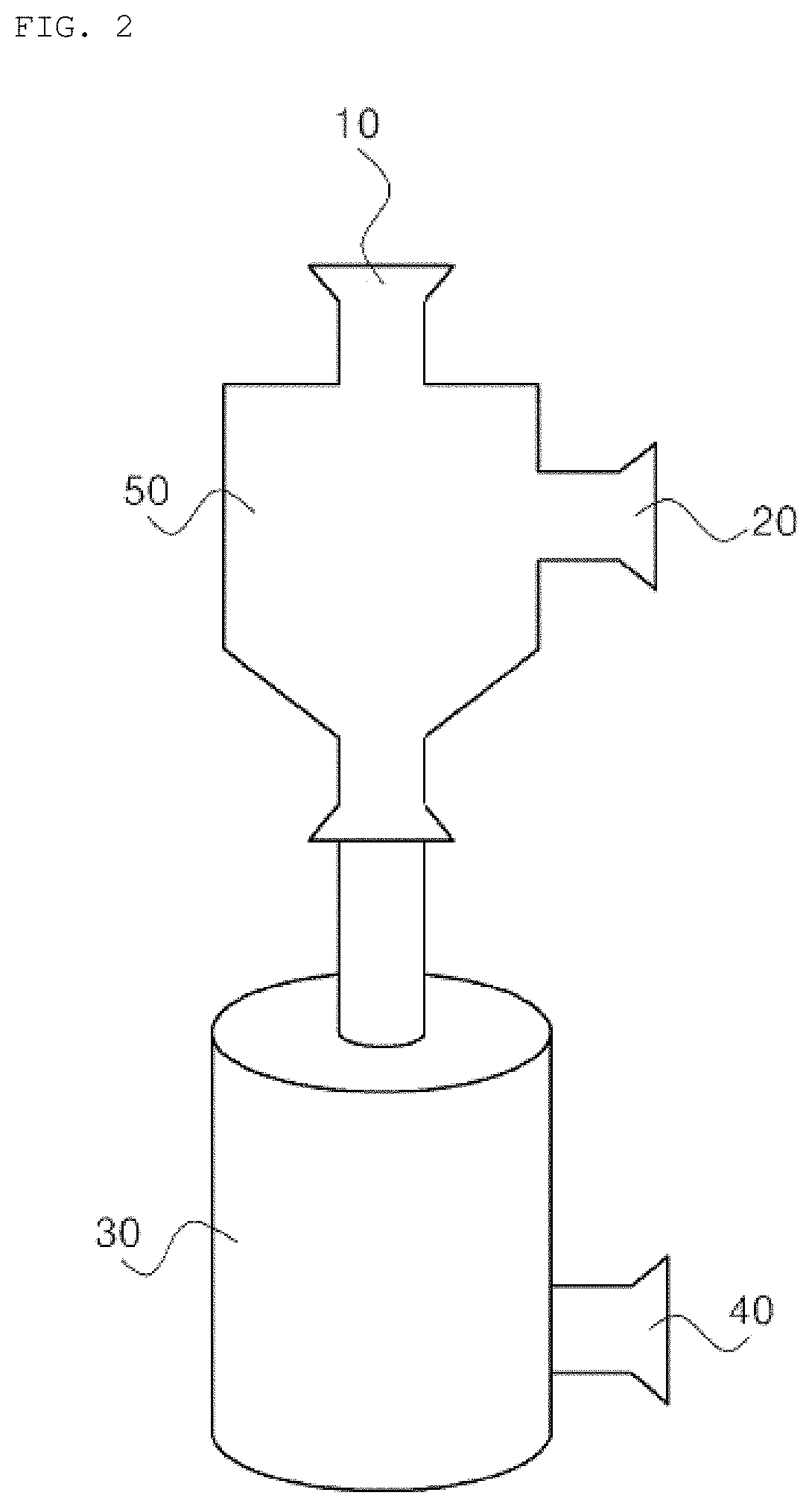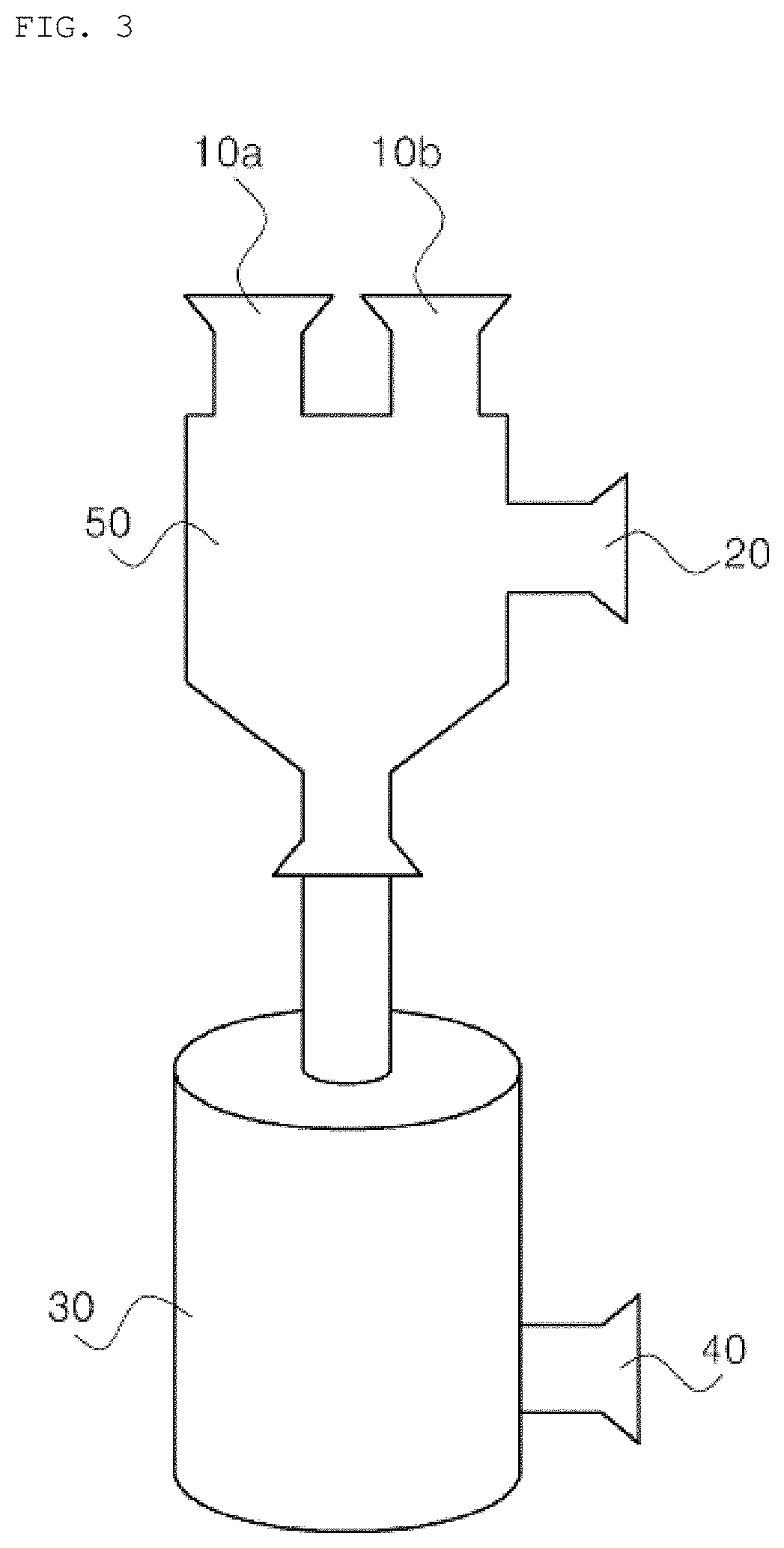Method for isolating extracellular vesicles using aqueous two-phase system
a two-phase system and aqueous technology, applied in the direction of solvent extraction, separation processes, instruments, etc., can solve the problems of high cost of equipment, low yield of extracellular vesicles, long isolation time, etc., and achieve short isolation time, high isolation efficiency, and simple isolation process
- Summary
- Abstract
- Description
- Claims
- Application Information
AI Technical Summary
Benefits of technology
Problems solved by technology
Method used
Image
Examples
example 1
[0053]Design of Aqueous Two-Phase System for Isolating Extracellular Vesicles
[0054]In order to find an aqueous two-phase system able to efficiently isolate extracellular vesicles, systems A, B and C, comprising polyethylene glycol / dextran aqueous solutions at different concentrations, were prepared as shown in Table 1 below.
[0055]
TABLE 1DextranKind of aqueous two-phase systemPolyethylene glycol (wt %)(wt %)System A3.51.5System B73System C10.54.5
example 2
[0056]Isolation of Extracellular Vesicles and Protein Depending on Kind of Aqueous Two-Phase System
[0057]In order to evaluate the results of isolation efficiency of extracellular vesicles and protein using three kinds of aqueous two-phase systems of Example 1, 500 μl of a sample comprising extracellular vesicles and protein mixed together was added with each aqueous two-phase system of systems A, B and C of Example 1 at a desired concentration, and was then dissolved at room temperature for about 1 hr, after which the aqueous two-phase system was centrifuged at 1,000×g-force at room temperature for 10 min to induce phase separation. Here, the concentration of extracellular vesicles of the sample was 100 μg / ml and the concentration of protein thereof was 2000 μg / ml.
[0058]Thereafter, the extracellular vesicles were extracted from the phase boundary between the polyethylene glycol layer and the dextran layer, after which the concentration of the extracellular vesicles and the concentra...
example 3
[0064]Comparison of Isolation Efficiency with Conventional Methods of Isolating Extracellular Vesicles
[0065]In order to evaluate the superiority of the method of isolating extracellular vesicles using system C as the aqueous two-phase system optimal for isolating extracellular vesicles in Example 2, conventional methods of isolating extracellular vesicles, for example, ultracentrifugation isolation and commercially available ExoQuick, were applied as follows. The results are shown in FIG. 7.
[0066]When using ultracentrifugation isolation, 500 μl of a sample comprising extracellular vesicles and protein mixed together was diluted with 65 ml of phosphate-buffered saline (PBS) containing 5 mM EDTA dissolved therein and then treated at 100,000×g-force for 2 hr. Thereafter, the supernatant was removed and the amounts of precipitated extracellular vesicles and protein were measured.
[0067]When using ExoQuick, 500 μl of a sample comprising extracellular vesicles and protein mixed together wa...
PUM
| Property | Measurement | Unit |
|---|---|---|
| molecular weight | aaaaa | aaaaa |
| molecular weight | aaaaa | aaaaa |
| size | aaaaa | aaaaa |
Abstract
Description
Claims
Application Information
 Login to View More
Login to View More - R&D
- Intellectual Property
- Life Sciences
- Materials
- Tech Scout
- Unparalleled Data Quality
- Higher Quality Content
- 60% Fewer Hallucinations
Browse by: Latest US Patents, China's latest patents, Technical Efficacy Thesaurus, Application Domain, Technology Topic, Popular Technical Reports.
© 2025 PatSnap. All rights reserved.Legal|Privacy policy|Modern Slavery Act Transparency Statement|Sitemap|About US| Contact US: help@patsnap.com



